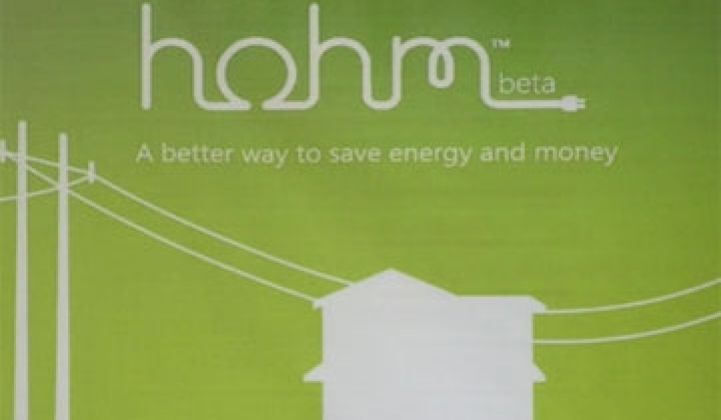For the past five years, pundits, investors, companies and others have gone out of their way to explain why the energy business isn't like Web 2.0.
Energy companies require a tremendous amount of capital, nearly all of the products have to go through rigorous testing cycles, free distribution models often are not realistic options and the customers are typically installers, middlemen and utilities, not consumers who pass it along through word-of-mouth.
All of the above are true, but Microsoft has set out to change some of the picture with Hohm, the energy management console it released last year. In fact, the more you examine Hohm, the more the whole strategy resembles an Internet business plan. Why? The videos with product manager Troy Batterberry provide more, but here's a quick run-down:
1. All you need is a computer. Hohm essentially creates a computerized simulation of your home through data submitted by the consumer -- square footage, the number of windows, utility expenses, the year built, etc. -- accumulated data and simulations from other users and household simulations in part developed from technology licensed from Lawrence Berkeley Lab. Hohm then tells you how you compare in energy consumption against your neighbors and gives recommendations on how to reduce consumption. New features this week also let you figure out your neighbor's power consumption, Zillow-like, by popping in their address and other info.
No smart meters or networked thermostats needed, just like how the increasing performance of PCs made smart set-top boxes and interactive TVs non-starters.
2. It revolves around computers talking to computers. Again, the recommendations are based on simulations and submitted data. Smart appliances and thermostats can be added to beef up performance -- and devices are coming soon -- but they aren't necessary to get some benefit from Hohm.
3. It may not work that well. Mylackey.com. Pets.com. Many thing work better in the real world than on the internet. Less reliance on smart meters and thermostats may cut the effectiveness. Google's PowerMeter relies on thermostats. On the other hand, simulations make it easier to track gas and water consumption, too. Consumer feedback will be crucial to determine which is better.
4. It's free! Everyone's favorite word. Microsoft will not charge consumers, Batterberry says so on tape.
5. Most of the money will come from advertising and leads. When Hohm gives its recommendations to improve energy efficiency, it will also disgorge a handy list of contractors who can do the work. The contractors pay Microsoft advertising fees, as well as for lead generation. Even more money may come from utilities: once Microsoft gets a large number of consumers in a given region, utilities will pay to get access to those customers to buy new energy efficient appliances and cut down their consumption. The company can use it as a way to schedule electric car charging too, which is yet another way to hit up utilities.
5. The underlying technology is ultimately Bayesian. Thomas Bayes, the 18th-century English clergyman, is the father of search and artificial intelligence because he believed that averages could predict future outcomes. (Read this article on the subject that, coincidentally, I wrote.) For Hohm to work, Microsoft will take the data from the experiences of its users, make it anonymous to ensure privacy, and then data-mine the bejeezus out of it.
6. It's social. Around 8,000 early adopters are trading tips on Twitter and Facebook.



